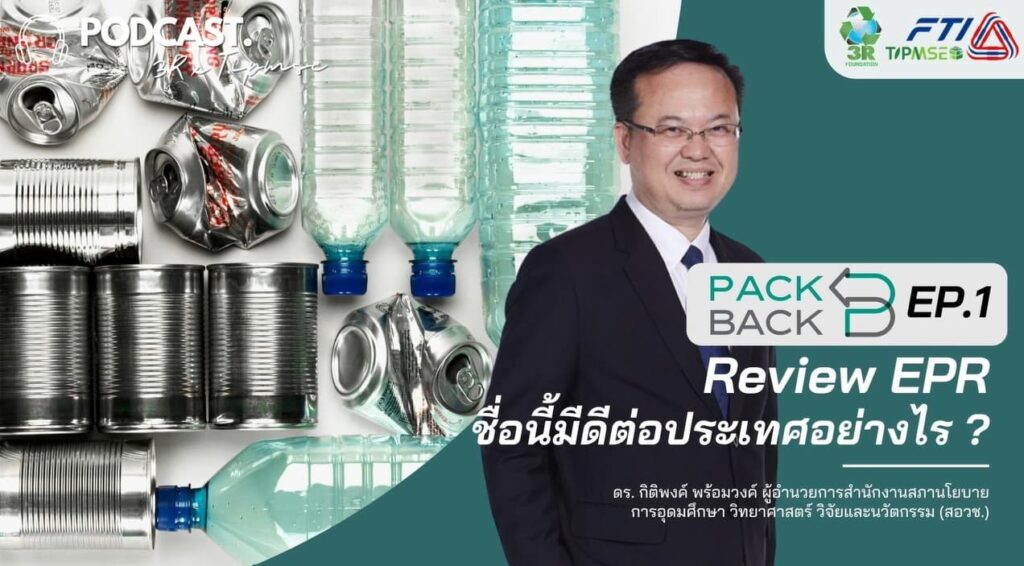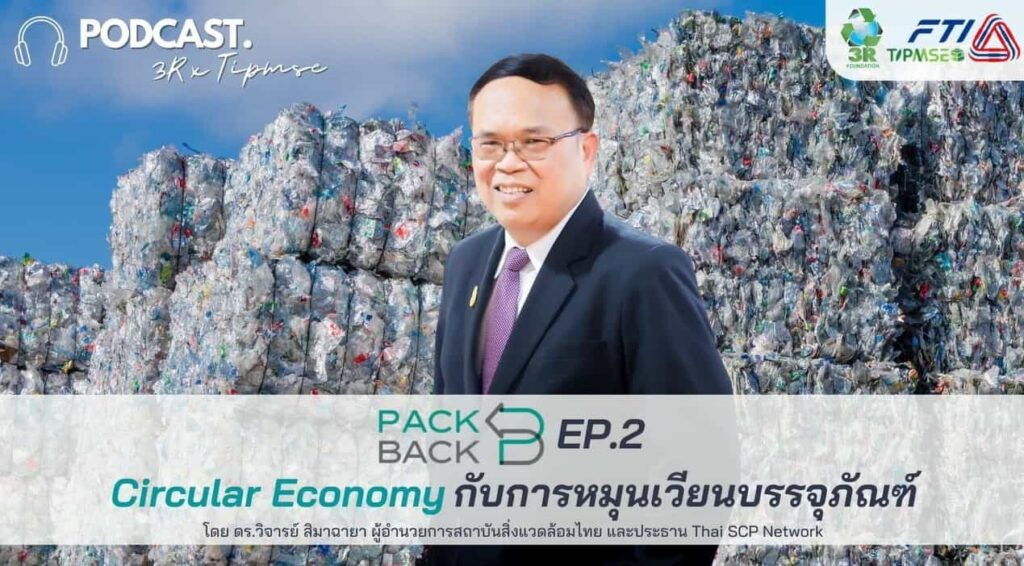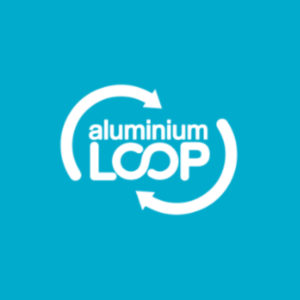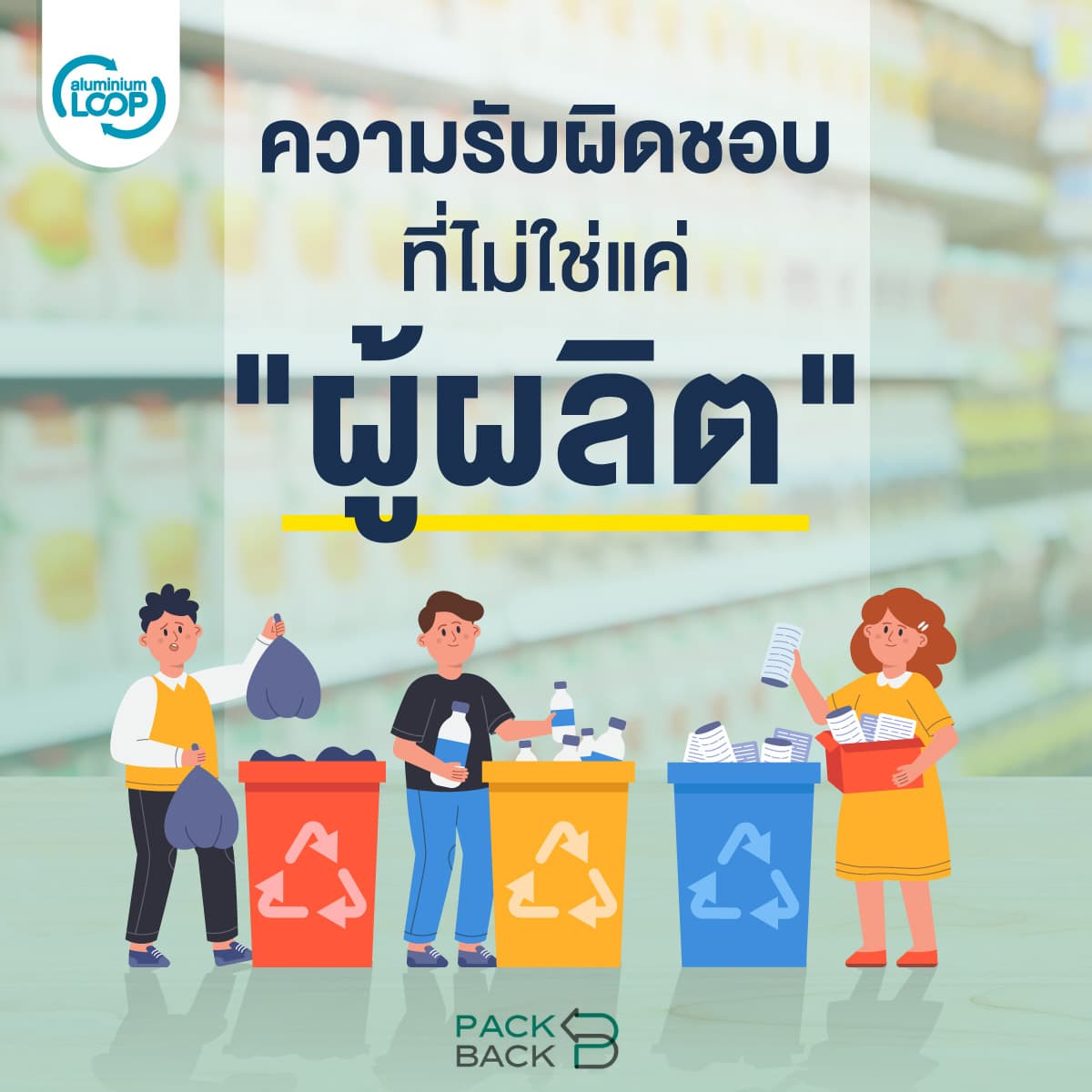
How is ASI important to the aluminium industry?
For transparency in the sustainable use of aluminium materials, certification like ASI is necessary to build consumer trust.
Nowadays, many brands make their products and packaging more environmentally friendly and some brands launch campaigns encouraging consumers to engage in earth-friendly activities, winning over the hearts of green-minded customers. So why have these brands chosen to change?
Simply urging consumers to use cloth bags and reduce plastic packaging use might not be sufficient for environmental remediation. Thus, producers, who are crucial in generating waste and pollution through their production processes and post-consumer waste from their products and packaging, must also show responsibility.
This article focuses on the role of producers who are not just responsible for manufacturing but for the entire product life cycle. Highlighting key points from interviews with Dr. Kitipong Promwong, Director of NSTDA (National Science and Technology Development Agency), on “How does EPR benefit the country?” and Dr. Wijarn Simachaya, Director of the Thailand Environment Institute and Chair of the Thai SCP Network (Thai Sustainable Consumption and Production Network), on “Circular Economy and the Circulation of Packaging.”


Let’s first understand the EPR…
EPR (Extended Producer Responsibility) expands the producer’s responsibility beyond just manufacturing and selling. Now, this responsibility also covers the post-consumer.
The EPR began in Europe to address waste issues like electronic waste, old car scraps, etc. Its goal is for producers to reduce environmental pollution and resource use in production, and to extend the lifespan of their products. Producers have to start by choosing environmentally friendly and durable materials, improving design, possibly using technology in the production process, and then figuring out how to take back used products or packaging. Once collected, they need to consider how these can be reused or recycled into new production, aligning with the principles of the Circular Economy, which also promotes efficient resource use.
When EPR is applied on a large scale nationally, another necessary step is to establish national standards that align with the global value chain. For example, setting standards for Circular Economy products and for recyclable materials, and framing laws and regulations related to the Circular Economy. These need to be fair for everyone in the system and must be widely accepted, benefitting the majority of society.
Moreover, after applying EPR on a larger scale, it’s essential to support the emergence of new green businesses, which will further create green employment opportunities.

Beyond designing environmentally friendly products and packaging, another crucial step is post-consumer waste management. We see a significant amount of waste, particularly packaging waste, which is very close to us. The question is, how do we ensure that this packaging is disposed of correctly and in the right place so it can be effectively managed or recycled to circulate these resources again.
For example, in addressing the plastic bag issue, the Thai government has taken steps to collaborate with stores to stop handing out plastic bags and encouraged citizens to use cloth bags instead. The public has started to adapt and might be familiar with using cloth bags, or at least aware of the need to reduce plastic bag use – a good sign that shows awareness of the problem with plastic.
As the producer’s or private sector’s perspective, there’s a push for packaging recycling, including find the ways to collect used packaging to support the Circular Economy, like the Aluminium Loop project advocating for the recycling of used aluminium cans, Thai Namthip and Haad Thip’s project to convert colored bottles into clear ones for easier recycling, the “Won” project, and Send Plastic Home project. These efforts reflect the producers’ and private sector’s commitment to contribute to the Circular Economy by managing packaging to be more recyclable.
It’s important to have a comprehensive system for packaging take-back that involves the collaboration of all parties: producers, consumers, and distributors like shops and malls. We need to consider the full life cycle of products and packaging, starting from the production process to the end of life, called MFA (Material Flow Analysis). And there’re also innovations like packaging innovation that extends the product’s shelf life, various recyclable designs, and closed-loop recycling, which brings materials back to their original form, like glass or aluminium.
However, clear labeling and symbols also make take-back programs easier to implement, such as recycling symbols with numbers on plastic packaging that help consumers throw waste in the right bin and understand where it can be recycled. Such practices can significantly enhance the collection and recycling of post-consumer packaging waste.
Moreover, educating and raising awareness about packaging waste separation is also important. While campaigns might not be immediately effective, in the long run, it’s essential to keep instilling this knowledge, starting from young children at home and in educational institutions. There are 3 levels of education: for young children, it’s about creating memorable scenarios and mindsets; for high school and college students, it’s about understanding the differences in packaging types and waste separation systems; and for working adults, it’s about creating motivation and enabling consistent practice.
Implementing EPR may not be straightforward but it’s certainly not too difficult in Thailand. The government, private sector, educational institutions, and related agencies must work together to analyze and test the most suitable EPR systems for Thailand.
As consumers, They can easily participate, for instance, by disposing of packaging waste at drop-off points, and supporting Circular Economy products. Small actions can create a significant impact, driving EPR forward in our society and country sustainably.
Listen to the podcast Pack Back: EPR Series for more insights at:


For transparency in the sustainable use of aluminium materials, certification like ASI is necessary to build consumer trust.

Campaigning for consumers to use cloth bags and reduce the use of plastic packaging might not be enough. Manufacturers, who play a significant role in creating waste and pollution, must also take responsibility.

Thailand’s first brand of canned drinking water. Good for the body, good for the soul, and eco-friendly because aluminium cans are 100% recyclable.